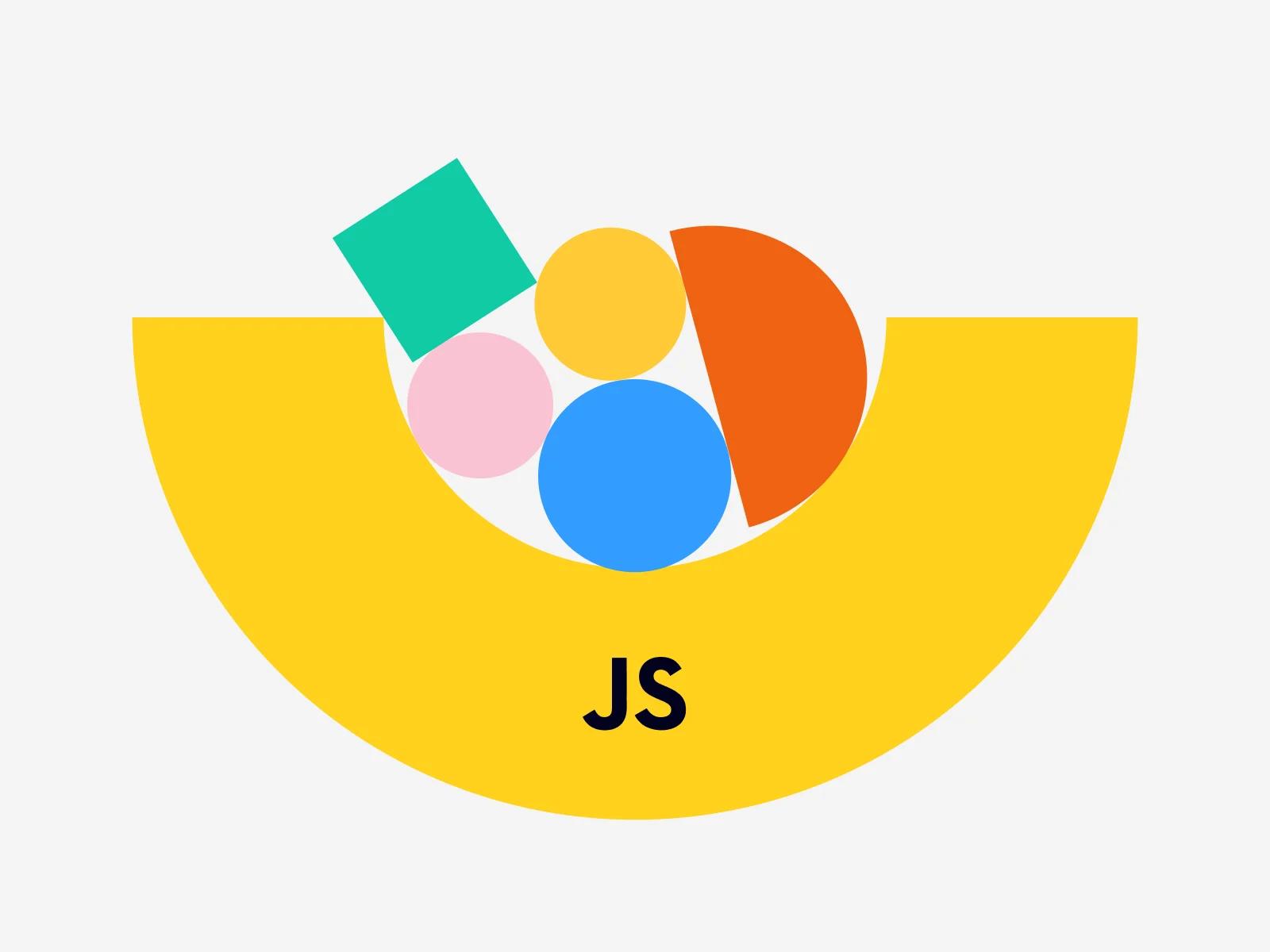JavaScript remains the most popular programming language, and JavaScript frameworks enrich and expedite the developmental process, offering developers tremendous flexibility. However, choosing the right one can be a daunting task. This article presents an all-around analysis of the most popular JavaScript frameworks.
In a survey conducted by Stack Overflow in 2021, JavaScript (JS) remained the most popular programming language for the ninth consecutive year, with more than 60% of respondents saying they use it frequently for development. Alongside CSS and HTML, JavaScript is one of the core web technologies.
This programming language is not only used in web browsers but also in back-end development and for building desktop applications. Its usage has even extended to desktop, game, and mobile development. This increasing popularity and adoption of JavaScript can be attributed to its wide applicability, ease of implementation, and robust community support.
Despite the fact that web applications can be written without frameworks, they offer a template to implement common programming elements.
These days, vanilla JavaScript has been sidelined by frameworks that offer you the blueprints to develop JS-based applications. However, choosing the best framework can be confusing and challenging with such a wide range of options. Through this article, you’ll find a comprehensive list of the best JS frameworks so that you can make the right decision.

What Is A JavaScript Framework?
A JavaScript framework is a collection of JS code libraries that offers developers pre-written codes for performing standard programming features and tasks. In short, these frameworks provide developers with the necessary basic foundations for building JS applications.
Despite the fact that web applications can be written without frameworks, they offer a template to implement common programming elements. For each functionality you want to add to an application, you don’t have to write the code from scratch every time. Rather, you can build on top of existing features.

Why Use A JavaScript Framework?
Frameworks offer developers a wide catalog of tools that makes it easier, faster, and more efficient to build complex applications, thus enriching the developer experience. They provide access to functionalities like linting and testing to ensure you’re inputting error-free code. The main advantage of a JS framework is enhanced functionality without the need to code from scratch.
Javascript remains the language of choice for web development, and each JavaScript framework has its own strengths and weaknesses. Keep that in mind when making a choice.
For instance, both Vue.js and React (technically, it’s a library and not a framework, but it works similarly) use the virtual document object model (DOM), which is faster and more efficient at processing HTML elements as it only updates the altered ones. On the other hand, vanilla JS will update the whole DOM again when a change is made, regardless of its size. Thus, virtual DOM makes Vue.js and React faster on applications and websites that feature a lot of interactive elements. Other than this, JavaScript frameworks also allow you to:
- Communicate patterns and ideas in a summon language;
- Solve common front-end problems;
- Manipulate UI based on data.
They also integrate tools that facilitate testing and debugging codes, enriching the developer experience. The installation, updates, and configuration of tools, packages, and libraries can also be automated with JS frameworks, making them significantly less cumbersome and error-prone than vanilla JS.
Popular JavaScript Frameworks

The JavaScript framework ecosystem keeps growing and aims to enhance the developmental process. Here is a list of the 10 most popular JS frameworks.
If you’re a new developer, you might be overwhelmed by the sheer number of frameworks, but you don’t need to worry. Start with just one or two and slowly add a few more as you get more confident.
React.js
React was created by Facebook (now known as Meta) in 2013, and according to the State of JavaScript 2021 survey, it’s the most widely used library. Technically, it’s not a framework but a JavaScript library for building user interfaces. Unlike other libraries, it updates elements instantly rather than doing it all at once, providing fast UIs for interactive apps that use data efficiently.

React also supports incremental use and leverages the virtual document object model (DOM) for fast web page content updates. With React, developers can now create components — self-contained modules of code packaged for reuse. Components allow you to write the code once and use it across the entire application, and for updates, you have to make changes only once. This feature saves a lot of time for developers.
Pros
- Easy to learn and use
- Reusable components
- Allows for use of other javascript libraries
Cons
- It covers only an application’s UI layers
Vue.js
Vue is a front-end JS framework built to be fast, versatile, and approachable, primarily focusing on designing simple-page applications (SPAs). Its major USP is its incremental usage model, which allows it to be used incrementally, unlike other frameworks that require full adoption. Additionally, it will enable you to use the cross-platform framework Weex for building native applications.

The page templates in Vue can also be written in standard HTML and packaged into components so that they can be reused and updated quickly. In Vue, new data is automatically updated through the reactivity system. Moreover, teams accustomed to front-end languages like HTML and JSX will find Vue easy to learn.
Pros
- Simple to use and easy to learn
- Small in size
- Simple integration
Cons
- Comparatively smaller numbers of plugins and components libraries
Angular
Angular is a front-end JS framework with a core focus on building sophisticated and efficient SPAs with support for MVVM and MVC architecture. It leverages data binding to synchronize automatically between database and client, eliminating the need for developers to define responses and requests whenever a user engages with the UI. A major advantage of this framework is its use of HTML templates that allow browsers to parse files directly.

Since Angular depends on the browser to build pages, it lightens the load on the app’s server resulting in faster load times. A combination of best practices, declarative templates, excellent end-to-end tooling, and dependency injection make Angular an excellent choice for solving development challenges.
Pros
- Angular is cross-platform
- It automatically sets up testing frameworks
- Ahead of time compiler ensures faster load time
Cons
- Steep learning curve
Ember.js
Ember is an open-source JS framework that focuses on building rich and interactive UIs regardless of the website’s size, from SPAs to large-scale apps. It’s built around the developmental model of CSS and HTML, thereby reducing the learning curve. The main advantage of this framework is its focus on convention rather than configuration, which means it prioritizes out-of-the-box functionality. Thus, the developer makes fewer decisions which, in turn, reduces the possibility of error.

By using HTMLBars, a superset of Handlebars’ template engine, Ember.js provides a new binding syntax that automatically updates any relevant changes to data. It’s very easy to use and highly consistent with robust community support. However, its components are not reusable.
Pros
- Well-developed package ecosystem
- Seamless URL support
- Provides client-rendering services
Cons
- Tough to learn
Svelte
Similar to Vue and React, Svelte is a JS framework for building web applications with a focus on making it easier to design interactive UI. It features an in-built reactivity that allows Svelte apps to react to value changes without needing state management solutions, giving it an edge over other frameworks. Another major advantage of this framework is that it requires comparatively less coding as it doesn’t need any unnecessary imports or extra knowledge about events.

Using this framework, you can build an entire application or gradually integrate it into your existing code. In addition, components can be delivered as standalone packages without traditional frameworks’ additional overhead. Its USP lies in its component-based nature and the fact that it needs no extra plugins — a simple build script is all it needs to get started.
Pros
- Easy learning curve
- Very good tutorials and documentation
- Features a built-in reactive store
Cons
- Small ecosystem and community support
Backbone.js
Using Backbone, you can create one-page applications very quickly. This framework is based on the MVC architecture, and in Backbone, the MVC view lets you develop component logic like a controller. The Backbone view can be used with engines such as Underscore.js.

You can assemble a variety of client-side web-based applications using its building blocks which primarily consists of explicit events, routers, models, and precise views. Unlike other frameworks that use declarative programming for the DOM, Backbone.js uses imperative programming to describe how to achieve what you want.
Pros
- Simple and flexible framework
- Great ecosystem and community support
- Allows own development and architecture-decision making
Cons
- Lacks an explicit and precise controller building block
Aurelia
Aurelia is another front-end JS framework developed to build mobile and desktop applications. It is designed to be compatible with web-platform specifications, and similar to Ember.js, it prioritizes convention over configuration.

It’s not a one-dimensional framework but is instead split into feature-oriented modules. These models can be used for JS projects like Node.js, and each module is written in TypeScript or ECMAScript. Aurelia is also built on W3C Web Components, allowing its development applications to grow with this standard without the need for major rewrites.
Pros
- Simple to use
- Integrates well with other components
- Modern architecture
Cons
- Steep learning curve
Express
Express.js is a framework that is used for Node.js and allows the speedy creation of web pages and applications. Fast server-side coding is one of the Express framework’s major advantages. Through this, you can accomplish complex tasks in a matter of minutes. Its active routing mechanism also handles dynamic URLs.

The Express framework is minimalist and unopinionated as there’s no implementation of any popular design patterns such as MVVM, MVC, MVP, etc. Fans of simplicity will enjoy this framework because you can build your apps according to your liking, and there is no steep learning curve.
Pros
- Very easy to learn even for beginners
- Lightweight framework
- Reduces web application building time
Cons
- Middleware functions are heavily used, which can result in a messy code
Meteor
Meteor is a free, open-source, isomorphic JS framework written in Node.js. It is used by leading organizations like Ikea to build web and mobile applications. Using it is a great way to explore the wide range of app development, and it’s an easy framework to master, even for beginners.

Further, Meteor is also cross-platform, allowing you to make all your app implementations in one place. With JavaScript on the back and front end, this framework enables rapid development, and in a matter of weeks, you can create an MVP with Meteor.js.
In addition to rapid development, JS on both the client and server ends offers other benefits, such as fewer context switches.
Pros
- Short learning curve
- It helps build applications quickly
- Cross-platform
Cons
- Small community
Mithril
Mithril is a client-side framework that is built specifically for making Single Page Applications. Its main attraction is its fast rendering. Mithril’s package size is 9.5KB, which is 1/13th of Angular’s size, making it more lightweight and faster.

A smaller file size results from an earlier design choice: less coding. Mithril has a concise API, and its components don’t need to be interfaced with other libraries, so you don’t have to add functionality for every scenario.
Pros
- Lightweight framework
- Easy to lean
- Fast initial load
Cons
- It’s not widely used
Choose The Right Framework For Your Website
Each website is unique and which framework you need depends on various factors. You will have different goals, features, and functionality for your task, which will dictate the kind of technology you need. JavaScript frameworks are a great way to increase speed and functionality without needing to learn a second programming language.
As a first step, you should identify your project’s scope. In doing so, you can determine which camp your application fits and which framework best suits your needs. Some are designed for SPAs, and others are built for large applications.
Consider how complex the framework is, as some, such as Ember, are designed to be easy to learn and use. Others, such as Angular, are more complex but offer greater flexibility. Depending on your familiarity with JavaScript, you may want to start with a simpler framework before moving on to more complex ones.
You also need to consider your website’s speed while choosing a framework. Like Vue, some are designed for quick updates and responsiveness by focusing on virtual DOM. On the other hand, Angular would be a better solution if you need more in-built control and functionality.
This awareness and understanding of the frameworks’ unique properties will enable you to choose the one that will maximize your product’s user experience and performance.

Conclusion
If you’re a new developer, you might be overwhelmed by the sheer number of frameworks, but you don’t need to worry. Start with just one or two and gradually add a few more as you get more confident. To choose the right one, ask yourself — what problems do you want the framework to solve? Will it integrate seamlessly with your workflow? What features do you need from a framework? And, will it be difficult to learn?
Once you’ve narrowed down the right framework for your needs, your development process will be more seamless and streamlined. JavaScript remains the language of choice for web development, and JavaScript frameworks each have their own strengths and weaknesses. Keep that in mind when making a choice.
in your mind?
Let’s communicate.





























